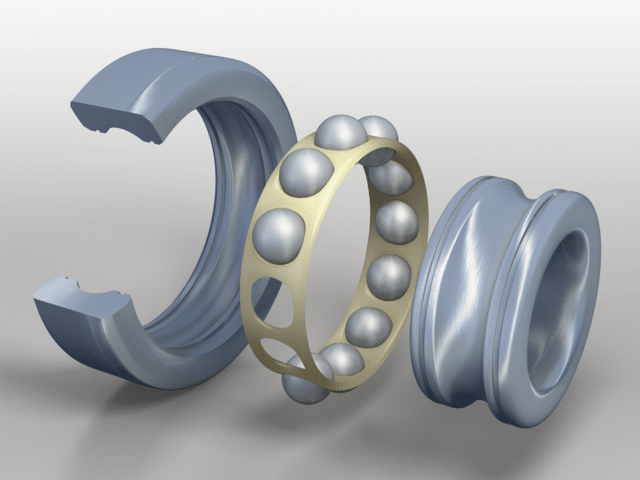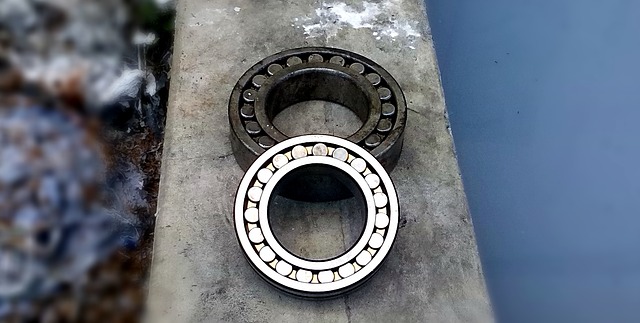If you talk to car and cycling enthusiasts about ball bearings, many will tell you they prefer ceramic bearings. The reason given is that ceramic bearings are typically smoother and rounder than their steel counterparts.
However, these ceramic bearings come at a significantly higher cost than bearings made from other materials. So, why are they so expensive?
Looking into some market pricing factors, we concluded that ceramic wheel bearings are primarily expensive because of the cost of the materials used. These bearings are made using ceramic balls made from silicon nitride Si3N4, which is an expensive material. Other factors such as their performance, reliability, high-value applications, and perceived value also contribute to the price.
This article will look into details on why ceramic wheel bearings cost so much. Keep reading to find out if they’re worth buying.
What Is a Ceramic Bearing?
Ceramic bearings are parts of a wheel assembly system consisting of spherical balls enclosed in a ceramic ring case.
There are two basic types of ceramic bearings: full and hybrid ceramic bearings. The latter is made up of little ceramic balls enclosed in a ferrous (mostly steel) outer and inner race.
On the other hand, full ceramic bearings are made up of ceramic balls and a ceramic race.

What Is It Used For?
There are numerous uses for ceramic bearings, most notably in performance racing vehicles, aerospace applications, laboratory equipment, and underwater applications.
They are basically used in applications that need high speeds, lower friction, and more durability. In simple terms, the bearings are meant to reduce friction between moving parts and stationary parts of a wheel system.
High-value applications like lab equipment have exact requirements that need to be met every time to have consistent results.
For instance, MRI scanners use ceramic bearings because the magnetic properties of steel bearings would affect the magnetic scanners’ functionality.
How Much Do They Cost?
Ceramic bearing prices can vary for several reasons, including brand, size, and application. However, they are always more expensive than a steel alternative.
For instance, Ceramicspeed, which is the gold standard for ceramic bearings, sells its base bearings for $359 apiece. As a comparison reference, Shimano Dura-Ace steel bearings cost less than $90.
Ceramic Bearings Vs. Steel Bearings
While both steel and ceramic bearings operate the same way, ceramic bearings are much more efficient. They perform better under load and reduce drag.
Ceramic bearings are also believed to use less power than steel bearings. However, modern steel bearings have similar power absorption to ceramic alternatives.
Another distinct difference between ceramic and steel bearings is the cage type. The cage is needed to keep the ball space even all the way around the bearing.
Steel bearings use a ribbon made from pressed metal and riveted between the balls as the cage. Ceramic bearings, on the other hand, use a composite or rubber cage.
Below is a video detailing the differences between the two types of bearings.
Ceramic bearings Pros and Cons
Ceramic bearings come with both advantages and some disadvantages depending on their usage.
Advantages of Ceramic Bearings
There are a few things that make ceramic bearings better than other alternatives. Here are a few of them:
1. Faster speed: A well-made ceramic bearing will have less drag, making it roll faster and less effortlessly. This also means that it absorbs less energy than metallic alternatives.
2. Light: Ceramic bearings are typically lighter than their steel counterparts. This makes them especially useful in racing bicycles and motorsport.
3. Durability: Ceramics are non-metallic, nonferrous materials. As a result, they don’t corrode as much as metal when exposed to most chemicals. They are also harder than steel, which makes them more durable.
4. Less thermal expansion: Ceramics don’t expand much around heat, making them better than steel for scientific applications.
Disadvantages of Ceramic Bearings
Nevertheless, ceramic bearings are not perfect. Here are some of their shortcomings:
1. Expensive: Ceramic bearings are significantly more costly than metallic alternatives.
2. Thermal shock: Although ceramics have a low thermal expansion, they are more susceptible to thermal shock. This is when a variation in temperature causes internal tension in a material, leading to breakage.
So, Why Are They So Expensive?
Materials Used
Ceramic bearings (both full and hybrid) are made with ceramic balls. The balls are usually made of silicon nitride Si3N4. This is a more expensive and rarer material than the steel used in conventional bearings.
Hybrid bearings also often use heat-treated chrome for the races, which is more expensive than steel. Full ceramic bearings, on the other hand, use ceramic balls and ceramic braces, which makes them even more expensive.
Performance
Ceramic bearings are better than metal alternatives in virtually every aspect. They have less drag, which means they roll faster and more effortlessly.
Ceramic bearings are also lighter than their metallic counterparts. In competitive applications like motorsport, this gives the user an advantage over anyone using steel bearings.
Reliability
Ceramic bearings are 10 times more durable than standard steel bearings. They are tougher and more resistant to wear. Since they are less affected by thermal expansion, they can be used for longer in high temperatures.
High-Value Applications
Their non-metallic, nonferrous nature also means they hold up well against water and corrosive materials. In scientific applications, they can be used for tests with multiple chemicals without reacting with them.
In medicine, ceramic bearings are used in MRI scanners. Since they are non-metallic, they don’t interfere with the machine’s magnetic field.
Perceived Value
Since ceramic bearings are associated with performance and high-value applications, they are naturally expensive.
Ceramic bearings are only made by high-end brands like Ceramicspeed, which are reputed for having quality bearings.
Read Also: Why are Tesla Cars Still So Expensive?
Are Ceramic Bearings Worth It?
It depends on the application. For instance, if you were to upgrade the steel bearings in your racing bicycle to ceramic bearings, it would require about $500.
Considering that your bicycle might be worth $1500, that money can be used on more important performance upgrades like a better saddle or lightweight tires.
However, if you’re using ceramic bearings for scientific or industrial purposes, the improved performance and durability might be worth the extra money.
Where to Buy Ceramic Bearings
There are as many places to buy ceramic bearings as ceramic bearing varieties. If you need a ceramic bearing for your bicycle, you can scroll through the countless options you have on online stores like Alibaba and Amazon. However, most of the bearings on these sites are generic or from little known brands. If you’re looking for high-end ceramic bearings, you can order them from individual manufacturers like enduro bearings and ceramic speed. These are also the best places to source bearings for industrial or scientific applications.


Pingback: Why are Richard Mille Watches So Expensive?